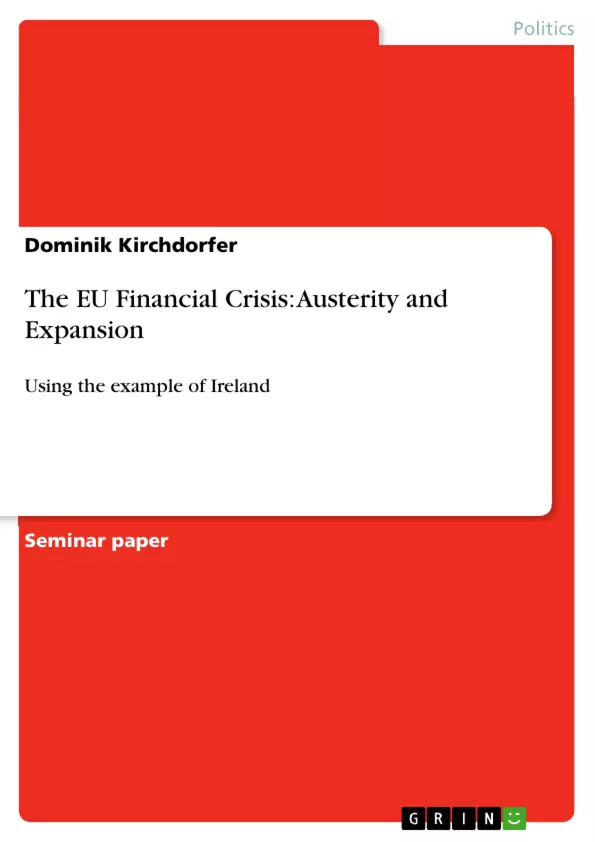In this paper I analyse the recovery plans for Ireland by the EU Commission and the Irish
government, as well as the developments of the Irish economy throughout its crisis. I find
that both the austerity and growth measures are of vital importance to the country's
recovery and as such the same can be said for the rest of the European Union. Ireland is on
its way back to a stable economy. The GDP, inflation and the current account are rising, but
the country still faces challenges with unemployment and an ever increasing pile of debt.
Greece and other countries affected by the crisis and now under the Troika programme,
should take Ireland as an example, but the EU will have to do its part to help these
countries with their growth programmes, instead of persisting on strict austerity measures
alone.
Inhaltsverzeichnis (Table of Contents)
- Introduction
- Irish Bailout
- Current Statistics
- Outlook
Zielsetzung und Themenschwerpunkte (Objectives and Key Themes)
This paper examines the recovery plans for Ireland implemented by the EU Commission and the Irish government, along with the economic developments throughout the Irish crisis. The main goal is to analyze the effectiveness of both austerity and growth measures in Ireland's recovery and their relevance for the rest of the European Union.- Austerity measures vs. expansionism in the European financial crisis
- The impact of the Troika plan on the Irish economy
- The effectiveness of austerity measures in restoring fiscal sustainability
- The importance of structural reforms in promoting economic growth
- The role of the EU in supporting the recovery of crisis-affected countries
Zusammenfassung der Kapitel (Chapter Summaries)
Introduction
This chapter introduces the ongoing debate surrounding austerity measures and expansionism as solutions to the European financial crisis. The author outlines the arguments for and against each approach and highlights the complexities involved. The essay focuses on Ireland's economic crisis as a case study to evaluate the effectiveness of austerity measures.Irish Bailout
This chapter delves into the Irish bailout package provided by the Troika (IMF, European Commission, and ECB). The author examines the objectives of the bailout program, focusing on restoring confidence in the banking sector and achieving fiscal sustainability. The chapter provides details about the key components of the program, including financial sector restructuring, fiscal consolidation, and structural reforms.- Quote paper
- Dominik Kirchdorfer (Author), 2013, The EU Financial Crisis: Austerity and Expansion, Munich, GRIN Verlag, https://www.grin.com/document/232334



